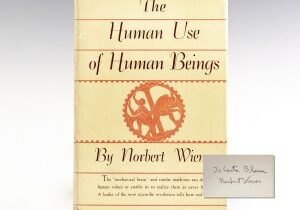 Described by T.S. Eliot as “the saddest of all English poets”, Alfred Lord Tennyson is considered, to this day, to be one of Britain’s greatest poets. Heavily influenced by the strictly metered and often melancholic style of the English Romantic poets, Tennyson’s verse illustrated a mastery of rhythm and descriptive imagery drawing on both the poetic structure and content of classical myths and medieval legends.
Described by T.S. Eliot as “the saddest of all English poets”, Alfred Lord Tennyson is considered, to this day, to be one of Britain’s greatest poets. Heavily influenced by the strictly metered and often melancholic style of the English Romantic poets, Tennyson’s verse illustrated a mastery of rhythm and descriptive imagery drawing on both the poetic structure and content of classical myths and medieval legends.
Born in 1809 into a large family in Lincolnshire, England, Alfred Tennyson began writing poetry alongside his two eldest brothers at the age of 17. He attended Trinity College in Cambridge where his first publication, Poems, Chiefly Lyrical, earned him the Chancellor’s Gold Medal in 1829. It was at Trinity College that Tennyson met fellow student Arthur Henry Hallam, with whom he developed a close and lasting friendship.
Tennyson returned to Lincolnshire in 1831 upon news of his father’s death, where he published his second collection of poetry, Poems, in 1833. The work was met with harsh criticism and, although he continued to write, Tennyson refused to publish again for the following ten years. Later that same year, Arthur Henry Hallam died suddenly from a stroke at the age of 22.
It was only after his decision to move to London and with strong encouragement from mentor Edward Fitzgerald (best known for his English translation of The Rubaiyat of Omar Khayyam) that Tennyson allowed a revised and lengthened version of Poems to be published. Poems of 1842 was a great success, consisting of two volumes – the first of which was a revision of the 1832 Poems, and the second of which was an epic 3,000 line requiem for the late Hallam, In Memoriam A.H.H., containing the resonating stanza:
I hold it true, whate’er befall;
I feel it when I sorrow most;
‘Tis better to have loved and lost
Than never to have loved at all.
Stemming from Tennyson’s personal grief over the loss of his closest friend, the poem was ultimately an allegory of the societal, religious, and intellectual conflicts that defined the Victorian era. Although published before Charles Darwin’s The Origin of Species, Tennyson used the elegiac structure of Poems as a vehicle to express the uncertainties and rising divergences between theology and scientific theory characteristic of the time:
Who trusted God was love indeed
And love Creation’s final law
Tho’ Nature, red in tooth and claw
With ravine, shriek’d against his creed
Tennyson soon found himself to be a celebrity in London. In response to the success of the 1842 Poems, Edgar Allan Poe wrote: “I am not sure that Tennyson is not the greatest of poets.” In 1850, he was appointed Poet Laureate of Great Britain and England by Queen Victoria, succeeding William Wordsworth. That same year he married his wife Emily Sellwood, whom he had known since childhood. She became the mother of his two sons, Hallam and Lionel.
Tennyson held the position of Poet Laureate until his death (the longest tenure of any laureate before or since) and produced some of his best-known works throughout the period, including: The Charge of the Light Brigade, Ode on the Death of the Duke of Wellington, and Idylls of the King.

First edition, first issue of Idylls of the King; inscribed by Alfred, Lord Tennyson to Charlotte Schrieber
A retelling of the legend of King Arthur and the Knights of the Round Table primarily adapted from Thomas Malory’s Le Morte d’Arthur, Idylls of the King was first published in 1859, containing four idylls that would become twelve throughout the course the following fifteen years. A dedication to Albert, Prince Consort was published shortly after his death in 1862. King Arthur’s idealistic expectations of his knights acted as a metaphor for the spiritual and moral corruptions inherent in contemporary Victorian ideals. Filled with vivid depictions of Gothic architecture and classic Romantic appreciations of nature, Idylls of the King came to be considered the greatest allegory of the era.
In 1883, Tennyson was admitted to the peerage and became Baron Tennyson. Upon his death in 1892, the position of Poet Laureate was left vacant and remained so for the following four years out of respect for the great poet’s death and in commemoration of his life and work.










